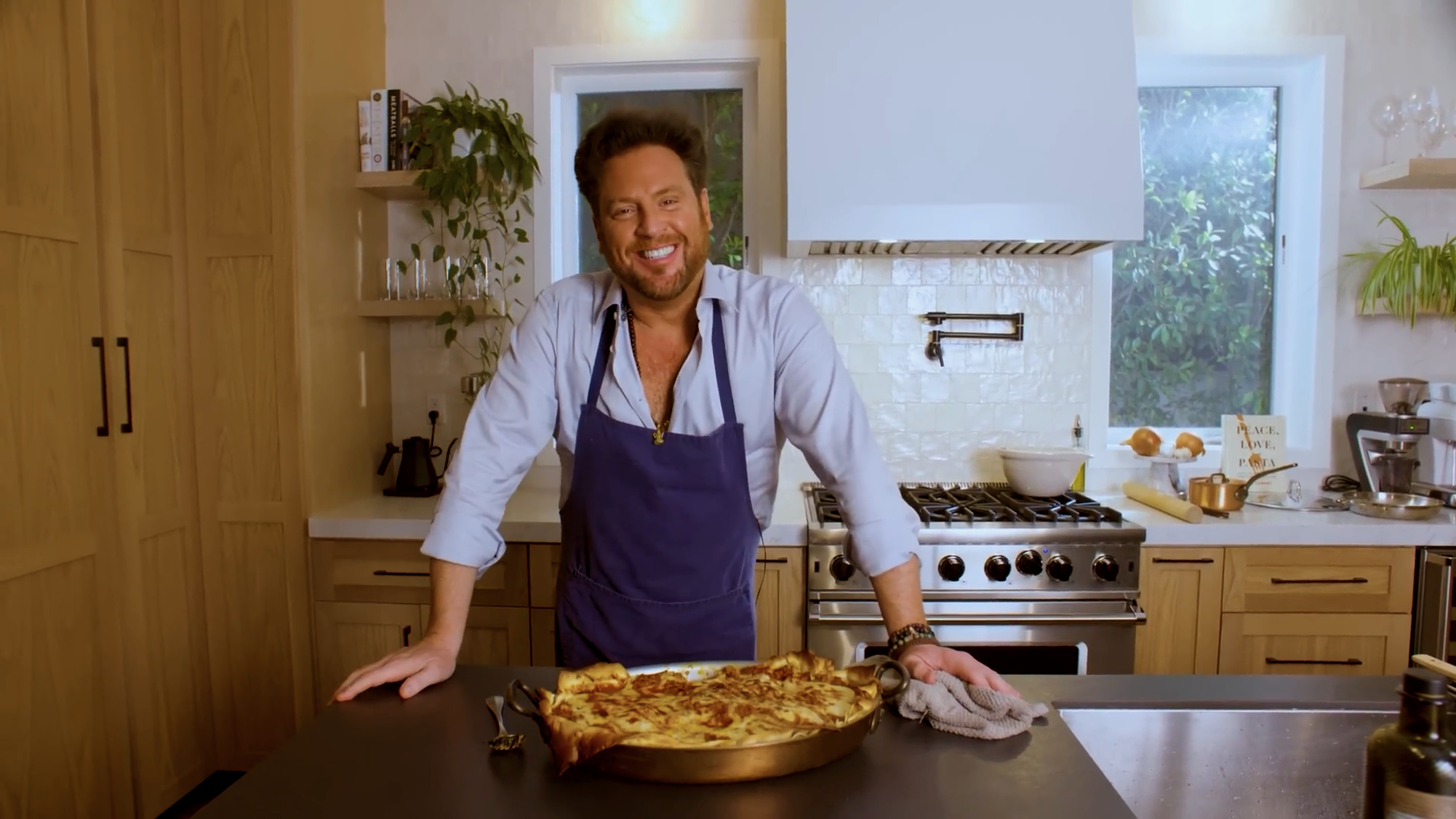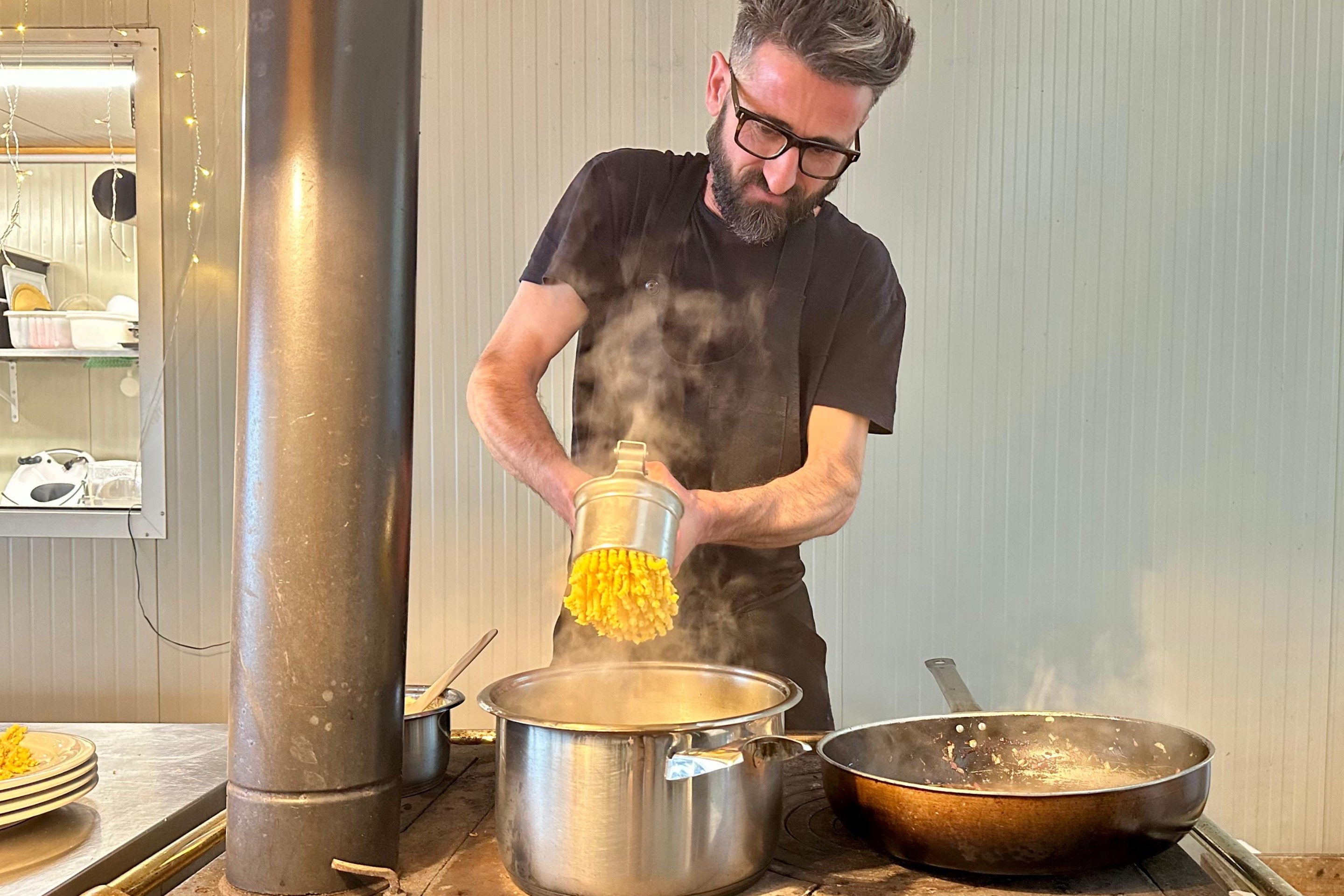Thank you for choosing to cook with me. I am the sixth generation of an Italian family that made food history. In 1857, Giulia and Giovanbattista Buitoni took over a small pasta shop in the Tuscan town of Sansepolcro, near the Umbrian border, and within a generation, they had become the first in the country to mechanize the making and distributing of pasta. In 1907, my great-grandfather invested in the talent of Luisa Spagnoli and her small confectionery shop, which went on to become Perugina Chocolates.
Alas, my four siblings and I, all born in Rome and reared in the Umbrian countryside, were destined to be the last generation of the family’s entrepreneurial history. The Buitoni and Perugina brands have belonged to Nestlé since 1989.
I am also the daughter of food-loving parents who believed raising your own food was a better way of eating. I was weaned on extra-virgin olive oil and Parmigiano. I first spooned ricotta into my mouth straight out of the warm whey in which the local shepherd had just cooked it. I played hide-and-seek in the room where pancetta and prosciutto were hung to cure. At the end of adult dinner parties, I emptied wine leftovers into vinegar barrels I could barely reach.
Our home was a 15th century former convent surrounded by an olive grove. Produce on the table came from our vegetable garden; chickens and fresh eggs came from the coop. In November, we picked olives. In January, a team of Norcini—the legendary cure masters of Umbria—spent a week at our place slaughtering and butchering our pigs and curing the meat.
Seasonal foraging expeditions were the norm. My siblings and I knew that yellow leaves meant we’d soon be digging mushrooms and shaking chestnut branches, that violets and wild asparagus signaled Easter, that after a summer storm we’d collect snails, and blackberry picking meant the start of school was around the corner.
Our lives moved to the clock of food.

Whatever didn’t come from our land, my parents carefully purveyed from selected food artisans all over the country. Our trips were always dotted with stops to acquire hyper-local ingredients that could not be found outside their area of production.
When I moved to the United States, many of the ingredients intrinsic to Italian cooking were available. I may not have had warm ricotta, but I could still find pantry staples without which I had no conscious memories. These foods have remained the half of my culinary basket that transformed every new house into a home. The other half of that basket has changed with my place of residence, coloring my Italian cooking with new brushstrokes.
Barely out of college, I chose food as my profession. I have worked in restaurant kitchens, catered to New York’s fashion elite, and owned an Italian food shop. Today, I teach home cooks the everyday art of Italian food. Twice a year, I move my classroom to Italy, and lead small groups along unbeaten food pathways, through natural beauty and timeless art.
My work has given me a deeper culinary understanding and technical knowledge of Italian artisanal foods. I have met the people who produce them and have learned to discern their markers of quality. I have seen firsthand their role in the well-being of local communities and economies.
The sum of my stories and experiences taught me to cross local agricultural bounty with the dish-defining taste of Italian artisanal foods, in both my personal and professional lives.
My book, Italy by Ingredient: Artisanal Foods, Modern Recipes, (Rizzoli USA, September 2023) is for the home cook who must budget time but does not want to give up great flavor. It is a guide to folding the robust character of Italian pantry staples into everyday cooking. Each chapter is dedicated to a single ingredient, such as balsamic vinegar or bottarga, or to more ingredients with affinity, like Parmigiano Reggiano and Pecorino Romano, the pillars of Italian cheese royalty.
Take the time to read each chapter introduction, it will make you a more informed cook and consumer. The recipes’ headnotes are personal musings dressed with cooking tricks and tips for ingredient substitutions and other adaptations. The recipes are attainable for cooks of every skill level and, for the most part, not time-consuming. We all have a life outside of cooking to which we must tend. I convey techniques in a sensorial and understandable language, describing the movements you should make and guiding you through the physical sensations that say you are on the right track. Hold on to those sensations; they will change the way you stand by the stove.
As an appetizer of sorts, here is a story and pesto recipe from the book. Enjoy!







